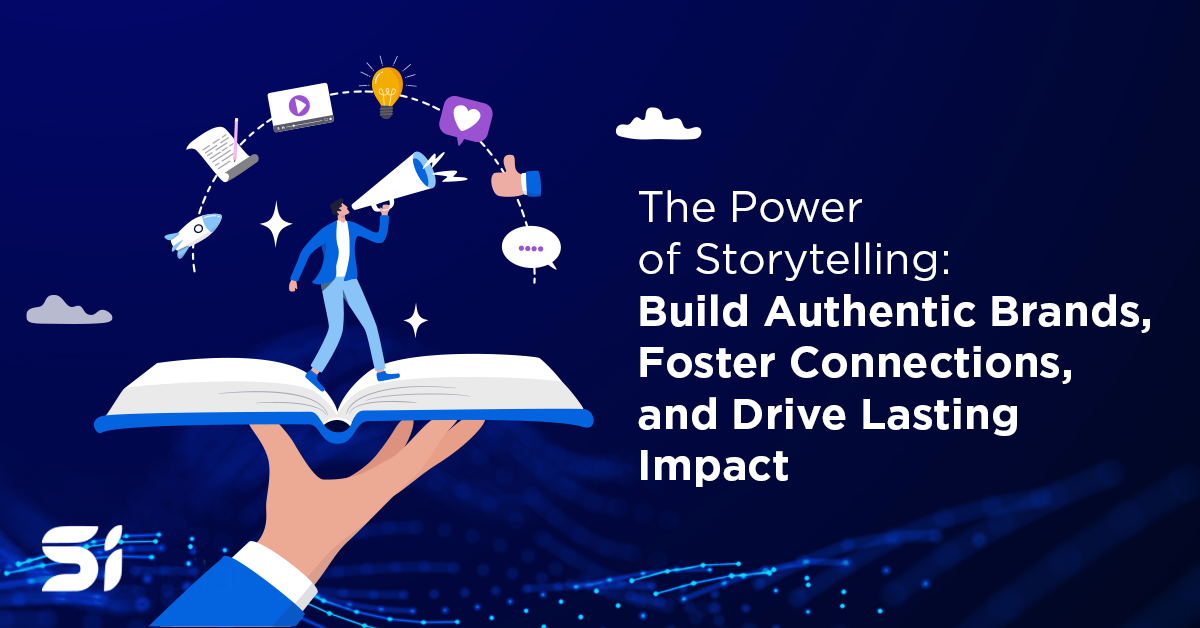In today’s fast-paced digital landscape, consumers are more informed and discerning than ever. How can brands effectively meet their needs while staying true to their core values? The answer lies in the timeless art of storytelling. Storytelling isn’t just a marketing buzzword—it’s a fundamental strategy for establishing and maintaining brand authenticity in today’s dynamic marketplace.
Storytelling: A Timeless Tool
Storytelling has been an integral part of human communication for millennia, evolving alongside society itself. Today, despite the shift from oral traditions to digital platforms, the essence of storytelling remains unchanged. Brands that harness the power of narrative can create deeper connections with their audience, making their messages more relatable and memorable.
Shifting the Power to the Consumer
The digital revolution and the rise of social media have fundamentally altered the balance of power between brands and consumers. With endless information at their fingertips, consumers now have the ability to shape brand narratives and hold companies accountable like never before. This shift means that brands must work harder to capture attention, drive engagement, and, most importantly, earn loyalty through authentic interactions.
Key Insights for Authentic Storytelling
- Stories Shape Perception: At its core, storytelling helps brands convey their mission, values, and vision in a way that resonates with consumers. By crafting compelling narratives, brands can influence how they are perceived and remembered.
- Staying Relevant Through Narrative: As technology and social media continue to evolve, so too must the stories that brands tell. Staying current with trends and understanding the cultural zeitgeist ensures that a brand’s narrative remains relevant and engaging.
- Immersive Experiences: Modern storytelling goes beyond traditional mediums. Interactive and transmedia storytelling allows consumers to engage with brands in more immersive and participatory ways, fostering a deeper emotional connection.
- Internal Alignment for External Authenticity: Authentic storytelling starts within the organization. When a brand’s values and mission are clearly understood and embraced internally, this authenticity naturally extends to external communications, making the brand’s story more genuine and trustworthy.
- Prioritizing Authenticity: In a landscape saturated with information, authenticity stands out. Consumers are quick to detect insincerity, making genuine storytelling crucial for building and maintaining trust.
Expert Perspectives on Storytelling
To delve deeper into the nuances of effective brand storytelling, insights from industry leaders shed valuable light:
- Seth Godin, Marketing Guru: Godin emphasizes the importance of telling remarkable stories that stand out in a crowded market. He believes that brands should focus on creating narratives that are not only unique but also resonate deeply with their target audience.
- Ann Handley, Content Marketing Pioneer: Handley highlights the significance of authenticity in storytelling. According to her, genuine stories that reflect a brand’s true values and mission are more likely to build lasting connections with consumers.
- Simon Sinek, Author and Motivational Speaker: Sinek introduces the concept of “Start with Why,” advocating that brands should communicate their core purpose and beliefs through their stories. This approach helps in creating a strong emotional bond with the audience.
- Gary Vaynerchuk, Entrepreneur and Social Media Expert: Vaynerchuk stresses the importance of leveraging social media platforms to tell authentic stories. He advises brands to engage directly with their audience, share behind-the-scenes content, and create interactive narratives that foster community and loyalty.
Leveraging Social Media for Authentic Storytelling
Social media platforms have revolutionized how brands interact with their audiences. While they can breed skepticism, they also offer unparalleled opportunities for direct and meaningful engagement. Brands can use these platforms to position consumers as heroes in their stories, fostering a sense of community and loyalty. By sharing behind-the-scenes content, user-generated stories, and interactive campaigns, brands can create a more authentic and relatable presence online.
Design Thinking: Crafting Honest Narratives
Integrating Design Thinking—a user-centered approach—into storytelling can help brands develop honest and compelling narratives. This methodology involves understanding the consumer’s perspective, empathizing with their needs, and creatively addressing their challenges. By applying Design Thinking, brands can ensure their stories are not only authentic but also resonate deeply with their audience.
Activity to Enhance Your Brand’s Storytelling: Define Your Forces of Antagonism
Identify the challenges your brand faces, whether they are societal, competitive, or consumer-related. Embrace these obstacles as part of your narrative, demonstrating your commitment to overcoming them. This approach enhances transparency and makes your story more engaging and honest.
Conclusion
Storytelling is not a fleeting trend; it’s a fundamental strategy for building and maintaining brand authenticity in today’s market. By embracing authentic storytelling, brands can navigate the complexities of the digital age, connect meaningfully with consumers, and foster lasting loyalty. As the landscape continues to evolve, the power of a well-crafted story remains an invaluable asset for any brand striving to make a genuine impact.








"Si has demonstrated the capacity to manage and execute digital and media projects at a global standard."
Nestlé
Head or Corporate Communications - Caribbean